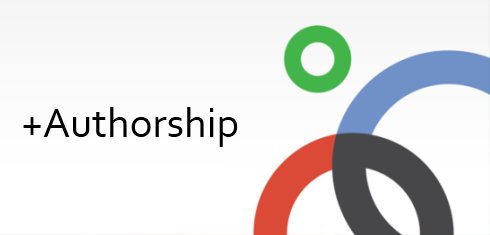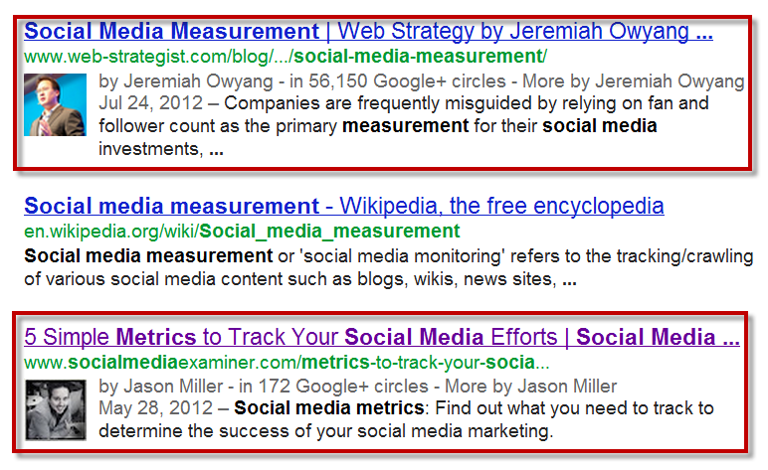Google’s Social Search results are more relevant when they take into account one’s social connections. That makes it important to include keywords within your posts so that they will show up in your followers’ search results. Google’s search algorithm includes personalized search results specifically pulled from Google+ activity. The more relevant and content-based your Google+ posts are, the more search results you are likely to show up in.
For example, a search for the term “B2B Marketing” shows activity from my connections as most relevant under Google’s Social Search personalized results.
Claim your ownership of content
Google is aggressively using SEO benefits to entice webmasters and bloggers to engage with Google+.
Google Authorship is how Google authenticates and will increasingly begin to “trust” you as a quality source of content. Setting up Google Authorship is simple and straightforward. You identify yourself to Google through your Google+ profile and then link back to it from your content and vice versa.
Google authorship is the easiest way to take advantage of the SEO benefits of Google+. Doing so will allow the author’s picture to show up next to his blog posts in Google search results, causing higher rankings and click through rates.
The business benefits for setting up Google Authorship
- Increases awareness of your overall Google+ profile page
- Adds a human element to your content and increases trustyworthiness
- Helps your content stand out from the crowded search page results
- Improves your chances of showing up in more personalized search results
- Protects the original post’s ranking position as higher than a post that has scraped or syndicated the original content
- Studies have shown that Google Authorship increases click through rates
How to add Google Authorship in Two Steps
Step 1: Add a link to your Google Plus profile on each of your blog posts
On each of your blog posts, add a link to your Google Plus profile with “rel=author” attached to the end of the link URL. E.g., https://plus.google.com/111498947729292607681?rel=author. It doesn’t matter where on the page you put the link or what the anchor text is (the clickable words in the link). You can even link an image instead of text.
For example the end result would look like this:
“By Jason Miller”
If you want to insert this link into all your blog posts automatically, then you can add it to your blog template, for example, in the footer or header (assuming your blog only has one author).
Step 2: Link from your Google Plus profile back to your blog
After you add a link to your Google Plus profile on each one of your blog posts, the last step is to link from the opposite direction, from your Google Plus profile to your blog. You do this by adding a link to your blog in the “Contributor to” section of your Google plus profile.








